Benchmarks
We
built our test system around the following components.
- Intel
Pentium 4 2.4B (B0 Core)
- GA-8PE667
Ultra 2 Motherboard
- Stock
Intel Heatsink
- Maxtor
80Gig DiamondMax Plus 9 with 8MB buffer (connected to Promise 20276)
- TDK
40/12/48 CDRW Drive
- Corsair
CMX512-3200 512MB
- Leadtek
WinFast A250TD Geforce 4Ti 4400
- Antec
True Power 430W PSU
We ran our Corsair CMX512-3200 memory at aggressive
timings
- CAS
Latency Time= 2
- Active
to Precharge Delay= 5
- DRAM
RAS# to CAS# Delay= 2
- DRAM
RAS# Precharge= 2
Software Used
- Windows XP Pro (SP1 all updates)
- 3DMark 2000 Version 1.1 Build 340
- 3DMARK 2001SE Build 330
- Camache 4 Demo Benchmark
- SiSoft Sandra 2003
- PCMark 2002 Build 100
- Pass Mark Performance
Test 4.0 Build 1003
Because we are using a stock Intel heatsink we did not
attempt to overclock the processor for performance comparison. Instead we
wanted to find out what running DDR333 would do for system performance compared
to running DDR266.
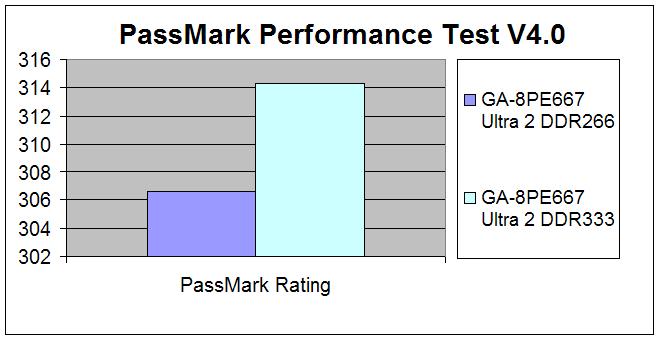
The
PassMark Performance test uses a variety of different speed tests to compare
performance between systems. Running DDR333 we get an overall score of 314.3;
running DDR266 we get an overall score of 306.6. There is really no big performance
increase here with DDR333. The GA-8PE667 Ultra 2 does however perform well
in both situations.
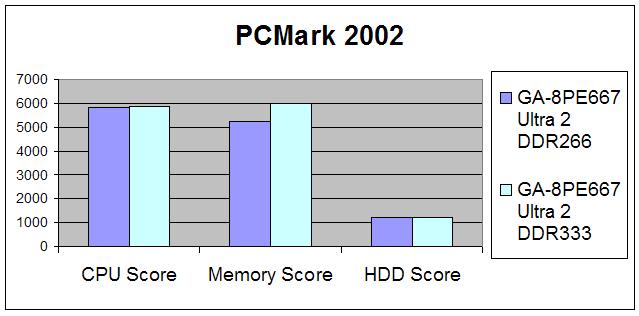
Futuremark’s
PC Mark 2002 benchmark tests common tasks in home and office applications.
We don’t see any real performance increase in the HDD score. There is a slight
increase in CPU performance and a decent increase in memory performance with
DDR333.
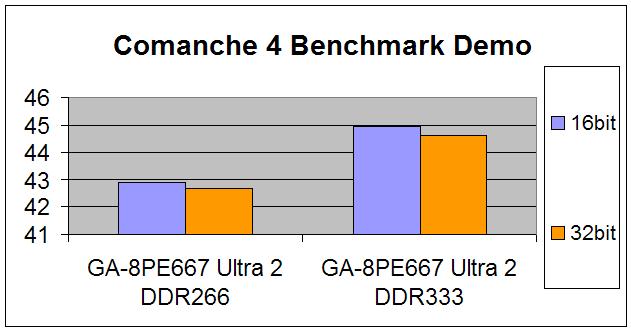
Comanche
4 is a Direct X 8.1 game. This benchmark measures system performance in real-world
gaming experiences. We ran the benchmark with default settings in both 32
and 16 bit. We do see a slight increase in performance with DDR333 but once
again nothing astronomical.
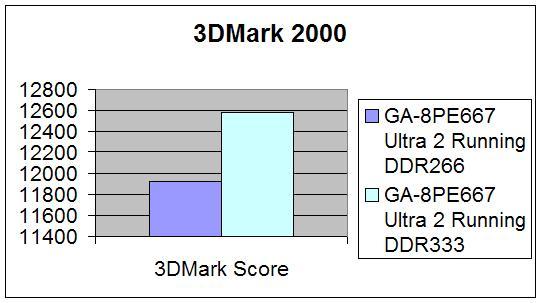
3DMark
2000 is an older Direct X 7.0 benchmark. We wanted to see how the system
performed running with older Direct X 7.0 material. We ran all the settings
at default. With DDR266 we got a score of 11923 and with DDR333 we got a
score of 12585. So in this benchmark we do see a semi decent performance
increase.
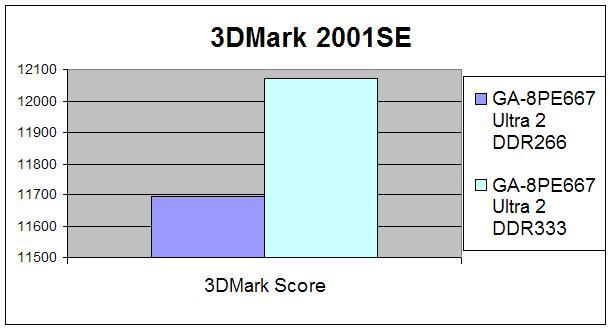
The
new 3DMark 2001SE combines Direct X8.1 support with new cool graphics. It
goes a great job at comparing overall system performance. Once again we ran
all the settings at default. With DDR266 we get a score of 11693; running
at DDR333 the score is 12071.

SiSoftware
Sandra’s Arithmetic Benchmark shows how the CPU handles arithmetic and floating
point instructions. The GA-8PE667 Ultra 2 performs very well against the
two reference systems.
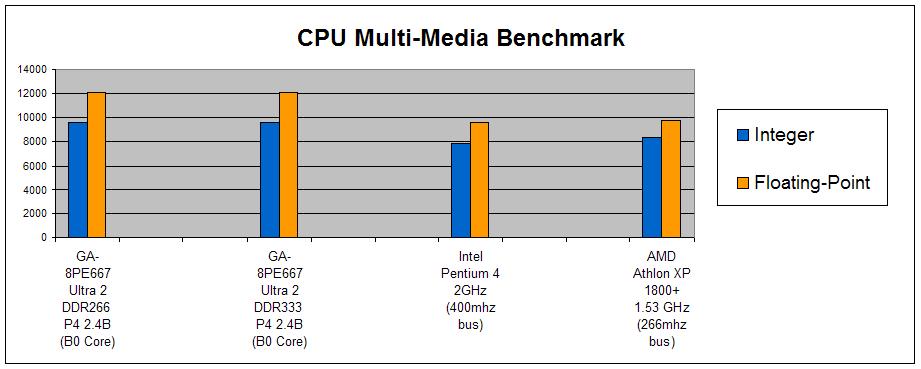
SiSoftware
Sandra’s Multi-Media Benchmarks shows how the CPU handles Multi-Media instructions.
Once again our test system performs well.
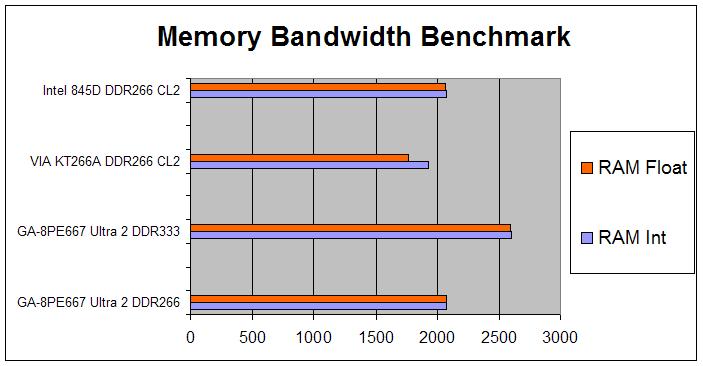
SiSoftware
Sandra’s memory benchmark shows how the memory sub system performs. Here
we see that running DDR333 improves the score greatly.
Conclusion
I
feel that the performance margin is so small between DDR333 and DDR266 because
we ran the memory at aggressive timings. If we compared DDR266 running CAS2.5
against the DDR333 running at CAS2 we would see a bigger performance gap.
The GA-8PE667 Ultra 2 did perform very well running at both memory speeds.
I am impressed.
With
the GA-8PE667 Ultra 2 you get performance, features, stability, and looks.
I have been running the GA-8PE667 Ultra 2 for over 5 days now and am extremely
pleased with the board in every way. The minor Bios glitches we ran into
should be corrected very soon. If you are currently looking for an 845PE
solution I would definitely consider the GA-8PE667 Ultra 2. In all honesty
this board rocks…..
Nigel
Woodford
03/01/05
